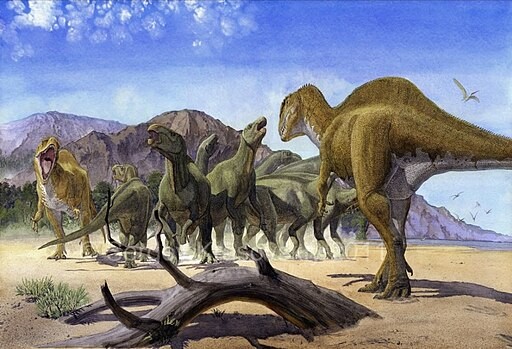There are rules that offer insights into the structure and functions of ecosystems across various geologic times. These rules, such as the Bergmann's rule, also help in conservation and management decisions related to the ecosystems.

(Photo : Wikimedia Commons/ Сергей Красотский)
What is Bergmann's Rule?
Bergmann's Rule states that within a broadly distributed taxonomic group, the size of an animal's body increases with latitude and correlates with the temperature of their environment. This long standing scientific principle proposes that animals in colder, high-altitude climates are usually larger than those in warmer regions.
The rule states that larger-bodied animals in colder regions have an advantage in conserving body heat because their reduced surface area-to-volume ratio minimizes heat loss. Meanwhile, smaller-bodied animals in warmer areas can dispel body heat more efficiently due to their higher surface area-to-volume ratio. This rule is particularly relevant for endothermic animals since they need to regulate their internal body temperature.
Originating in the 1800s, this rule has been the foundation of many biological theories, a key concept in ecology and evolution. It has been applied and tested by scientists across different animals such as mammals, birds, and insects. It also falls under biogeography which studies how ecosystems and species spread across time and places.
READ ALSO: New Pterosaur Species Unearthed on Isle of Skye Rewrites Jurassic History and Evolutionary Insights
Challenging a Classic Theory
In a remarkable study, the principle behind Bergmann's rule is being challenged. Experts from the University of Alaska Fairbanks and the University of Reading have discovered evidence from the fossil record which tells a different story.
The new research posits that the traditional concept of Bergmann's rule may not universally apply across various climates and species. The paper entitled "Global latitudinal gradients and the evolution of body size in dinosaurs and mammals" challenges decades of scientific consensus.
Led by Lauren Wilson from the University of Alaska Fairbanks, a team of researchers conducted a study which reveals the complexity of evolutionary traits. It was inspired by a conversation between Wilson and her advisor where they discussed if Bergmann's rule applied to dinosaurs.
The team conducted a comprehensive review of data from the fossil record, including dinosaurs from Prince Creek Formation in Alaska which endured freezing conditions. The scientists did not find any significant correlation, as if the animal's body size did not seem to relate to their arctic environment.
When the research was extended to modern birds and mammals, the experts discovered similar patterns. They found that the evolution of diverse body sizes in dinosaurs and mammals cannot be reduced to simply being a function of latitude or temperature. The fossil record provides a window into completely different ecosystems and climate conditions, allowing scientists to assess the applicability of ecological rules in a whole new way.
In other words, latitude proved to be an unreliable predictor of body size among the species of dinosaurs and mammals. The findings further complicates the supposed straightforward relationship suggested by Bergmann's rule.
Wilson also emphasizes the specificity of Bergmann's rule. According to her, the rule seems to apply only to homeothermic animals, or those that maintain stable body temperatures, and only under certain conditions. The revelation from the study hints at Bergmann rule being more of an exception rather than a universal principle.
RELATED ARTICLE: 3D Tree Fossils Older Than Dinosaurs Shed Light on Bizarre Prehistoric Forests
Check out more news and information on Dinosaurs in Science Times.














